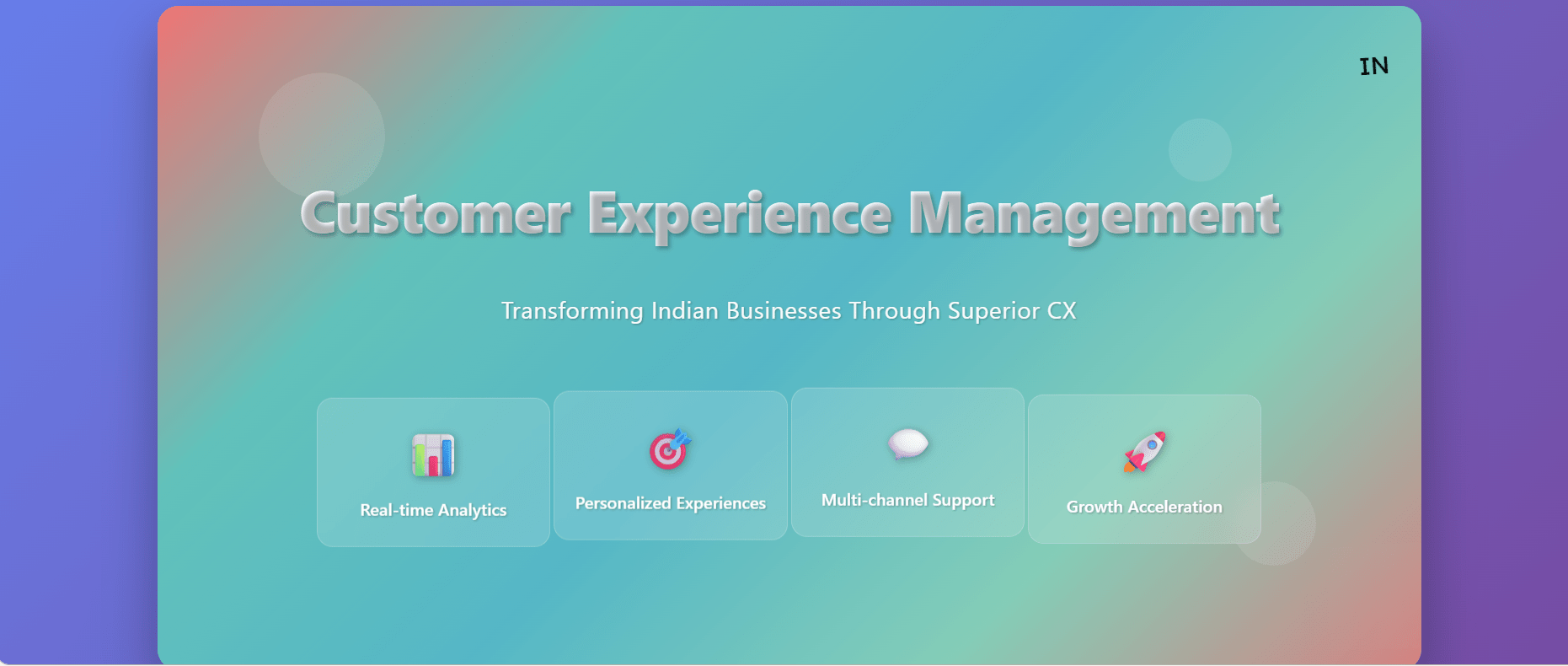Introduction
Let’s be honest – every company claims to be “customer-centric” these days. It’s written on websites, plastered on office walls, and mentioned in every quarterly meeting. But walk into most organizations, and you’ll quickly see the gap between what they say and what they actually do.
Building a real customer-first culture isn’t about motivational posters or company slogans. It’s about fundamentally changing how your team thinks, makes decisions, and solves problems. And here’s what most leaders don’t want to hear: you can’t do it without the right technology foundation.
A Customer Experience Management Platform isn’t just another software tool-it’s the backbone that makes customer-centricity possible at scale. Without it, you’re asking your team to be mind readers, working with incomplete information and good intentions.
What Does a Customer-First Culture Actually Look Like?
Before diving into technology, let’s get clear on what we’re trying to build. A customer-first culture means:
Everyone Has Customer Context: Your product team knows why customers are churning. Your marketing team sees which campaigns actually help customers succeed. Your sales team understands what frustrated customers before they even call.
Decisions Are Made with Customer Impact in Mind: When choosing between two features, you pick the one that solves real customer problems. When planning budgets, customer-facing improvements get priority.
Bad News Travels Fast: When something goes wrong for customers, the right people know immediately and can fix it quickly.
Success Is Measured by Customer Outcomes: Not just internal metrics like “tickets closed” but actual customer results like “problems solved” and “goals achieved.”

Why Most Companies Struggle with Customer-Centricity
Here’s the uncomfortable truth: most customer-first initiatives fail not because of a lack of commitment, but because of a lack of information.
Your support team knows customers are frustrated, but they can’t easily tell the product what needs fixing. Your product team builds features customers ask for, but they don’t know if those features actually help. Your executives see revenue numbers but miss the early warning signs of churn.
According to research from Deloitte, 62% of companies say they want to be customer-centric, but only 14% of customers agree that these companies actually are. The gap isn’t intentional; it’s execution.
How a Customer Experience Management Platform Bridges the Gap
Think of a Customer Experience Management Platform as your customer intelligence system. It connects all the dots that are currently scattered across different teams and tools.
Real-Time Customer Intelligence
Instead of quarterly surveys that tell you what customers thought three months ago, you get immediate feedback when something goes wrong. Instead of guessing why customers are upset, you see patterns across all interactions.
Shared Visibility
Everyone sees the same customer data. Your marketing team knows which customers had recent support issues. Your product team sees which features correlate with satisfaction. Your executives get alerts when key accounts are at risk.
Automatic Follow-Through
When customers give feedback, it doesn’t disappear into a spreadsheet. The right team gets notified, action items are created, and customers hear back about what you’re doing to help.
A Simple Framework for Getting Started
Month 1: Listen Better
Start by improving how you collect customer feedback. This doesn’t mean sending more surveys, it means making it easier for customers to tell you when things aren’t working.
Set up feedback collection at key moments: after support interactions, following product usage,and during renewal conversations. Keep it simple, one or two questions maximum.
Month 2: Share What You Learn
Create a weekly customer insight email that goes to your entire team. Include things like:
1. Top customer pain points from this week
2. Positive feedback worth celebrating
3.Trends you’re seeing across different customer segments
The goal isn’t to overwhelm people with data, but to help everyone understand what customers are actually experiencing.
Month 3: Close the Loop
This is where most companies fall down. Customers give feedback, and then… nothing happens. Or if something does happen, customers never hear about it.
Start following up with customers who give feedback. Let them know what you’re doing to address their concerns. When you ship a feature they requested, tell them about it.
Common Mistakes to Avoid
The Survey Trap
Don’t blast customers with long surveys every month. They won’t fill them out, and you’ll annoy them in the process. Instead, collect small amounts of feedback frequently at natural moments.
The Data Dump
Having access to customer data and actually using it are two different things. Don’t just collect information,make sure it’s reaching the people who can act on it.
The Perfection Paralysis
You don’t need to solve every customer problem before you start. Pick a few high-impact issues and focus on those first. Customers will notice when you start fixing things they actually care about.
What Success Actually Looks Like
After about six months of consistent effort, you should start seeing changes like:
1. Customer issues get resolved faster because the right people know about them sooner
2. Product decisions are easier because you have clear data on what customers need
3. Team morale improves because everyone can see how their work impacts customers
4. Customer satisfaction scores improve because you’re actually addressing root causes
According to Forrester Research, companies that excel at customer experience grow revenue 1.4x faster than those that don’t. But more importantly, your team starts making better decisions because they have better information.
Choosing the Right Customer Experience Management Platform
Not all platforms are created equal. Here’s what actually matters:
Ease of Use
If your team won’t use it, it doesn’t matter how powerful it is. Look for platforms that feel intuitive and don’t require extensive training.
Integration Capabilities
Your Customer Experience Management Platform needs to connect with tools your team already uses. If it creates more work instead of streamlining it, adoption will fail.
Actionable Insights
Pretty dashboards don’t matter if they don’t help you make decisions. Look for platforms that highlight what needs attention and suggest specific actions.
Real Results from Real Companies
A mid-sized software company we know implemented a Customer Experience Management Platform and saw their customer churn drop from 12% to 8% within six months. But the bigger change was cultural,their product team started prioritizing features based on customer feedback instead of internal assumptions.
Another company, a growing e-commerce business, used customer insights to identify that their biggest satisfaction driver wasn’t fast shipping,it was clear communication about order status. This insight helped them focus their improvement efforts where they’d have the most impact.
Getting Your Team On Board
The biggest challenge isn’t technical,it’s getting people to change how they work. Here are some strategies that actually work:
Start Small: Pick one team or one customer segment to focus on first. Show success before expanding.
Share Quick Wins: When customer feedback leads to a positive change, celebrate it and share the story.
Make It Relevant: Show each team how customer insights apply to their specific work. Don’t give everyone the same dashboard.
Be Patient: Culture change takes time. You’ll see process improvements in weeks, but cultural shifts take months.
Why Zykrr Works for Building Customer-First Culture
Zykrr’s Customer Experience Management Platform is designed around a simple idea: customer insights should be easy to collect, understand, and act on.
Instead of complex dashboards that require training to interpret, Zykrr surfaces the insights that matter most to each team member. Instead of generic reports, it provides specific recommendations for improving customer experience.
Companies using Zykrr typically see improvements in customer satisfaction within 60-90 days, not because the technology is magic, but because it makes customer-centric decision-making much easier.
See How Zykrr Can Help Build Your Customer-First Culture
The Bottom Line
Building a customer-first culture isn’t about grand gestures or company-wide initiatives. It’s about giving your team better information about customers and making it easy to act on that information.
A good Customer Experience Management Platform doesn’t just measure customer satisfaction,it helps you improve it. And when your team can clearly see how their decisions impact customers, they naturally start making better choices.
The question isn’t whether you should build a customer-first culture. In today’s competitive market, it’s essential. The question is whether you’ll give your team the tools they need to actually make it happen.
Frequently
Asked Questions
-
How long does it take to build a customer-first culture?
Most companies start seeing behavioral changes within 2-3 months, but full cultural transformation typically takes 12-18 months of consistent effort.
-
What’s the biggest challenge in culture transformation?
Getting people to actually use customer data in their daily decisions, rather than just collecting it and forgetting about it.
-
How do you measure cultural change?
Look for leading indicators like how often teams reference customer feedback in meetings, how quickly customer issues get escalated, and whether product decisions are backed by customer data.
-
Can small companies build customer-first cultures?
Absolutely. Smaller companies often have an advantage because they’re closer to their customers and can implement changes more quickly.





















